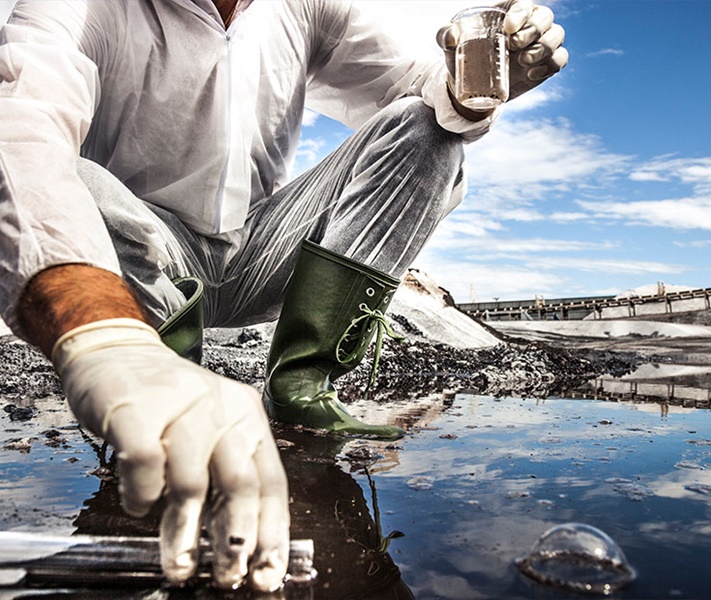Environmental Insurance
Our environmental practice is dedicated to understanding where environmental mitigation or risk transfer is needed; from the obvious to the obscure to ensure your insureds are protected. With expertise in industries as diverse as Manufacturing, Construction, and Healthcare, we understand where your clients are vulnerable to environmental losses and are focused on bringing you innovative solutions.

Environmental Insurance
Our environmental practice is dedicated to understanding where environmental mitigation or risk transfer is needed; from the obvious to the obscure to ensure your insureds are protected. With expertise in industries as diverse as Manufacturing, Construction, and Healthcare, we understand where your clients are vulnerable to environmental losses and are focused on bringing you innovative solutions.

Tailored coverage to meet your insureds unique needs.
In-house environmental programs + exclusive products
Proprietary products + programs
Amwins develops data-backed products and programs, ensuring we never fail to meet your clients' niche environmental insurance needs.
Expertise
With Amwins specialty environmental practice, you and your clients have access to experts who get insurance coverage right the first time.
Complex claim advocacy
From designing a proactive claims management plan to engaging on difficult and complex claims, Amwins supports our clients at the moment they need us most.
$479M
annual premium placements
175
environmental insurance professionals
320
environmental market relationships
Environmental insurance resources + insights
Stay up to date on emerging industry trends and topics.
Green Construction: Risk and Special Insurance Considerations – Part Two
Our “green” construction article series discusses certain sustainable construction-specific risks of which owners, general contractors, subcontractors, and other construction professionals should be aware before participating in a green construction project. To illustrate these risks, this article will highlight three of the most well-known “green” construction suits and discuss industry concerns and best practices.
Project Expectations and Sustainable Objectives
Part One of this article series addressed the importance of carefully defining certain terms in the project documents. Terms such as “sustainable objective”1 should be defined in the project documents in order to eliminate any ambiguities or uncertainty among the contracting parties as to the project’s ultimate aim.Although Bain v. Vertex Architects2 ultimately was disposed of based on plaintiff’s motion to dismiss, the case is illustrative of the practical consequences of failing to define controlling terms. In Bain, the contract documents specified that the project objective was “to create a sustainable green modern single family home.”3 The homeowner alleged breach of contract in that the architect failed to obtain LEED certification despite the fact that the project objective was stated much more broadly and where plainly eco-conscious features were included.4 Despite the fact that the Chicago home at issue was repeatedly profiled and praised as a “modern” and “eco-friendly,”5 it is clear that the homeowner had certain intentions when undertaking the renovation project. By failing to expressly define the owner’s goal of LEED certification in the contract documents, the owner left this project susceptible to conflicting—yet perfectly valid—interpretations of “sustainable” among the project’s construction professionals.
States and the federal government have attempted to incentivize project owners to undertake sustainable construction by offering tax credits based on a project’s sustainable attributes. Because these tax incentives usually require compliance with certain procedures and strict timelines, it is of critical importance that the owner clearly identifies the tax incentive they wish to obtain in the project documents so that all parties are aware. Even more, owners should consider incorporating the deadlines imposed by the tax incentive into the project documents.
For example, in Southern Builders v. Shaw Development6, a case celebrated by many industry experts as the first green construction lawsuit, the owner sued the project’s general contractor for $635,000 in tax credits for failing to construct a LEED Silver certified project in the timeframe required to be eligible for the tax credit. Like most sustainable construction litigation, this suit ultimately settled out of court. However, it is demonstrative of the range of implications where a project fails to obtain a desired certification or level of sustainability.
Use of Sustainable Materials
Sustainable projects involve the use of new, novel materials. For example, as part of the LEED certification process, projects may obtain certain LEED credits that are aimed to encourage project construction professionals to select and use materials “that have environmentally, economically, and socially preferable life-cycle impacts.”7 Because the importance of using such materials is relatively new, using such materials sometimes requires the project construction professionals to use materials that they are unfamiliar with or whose durability is still unproven.The Philip Merrill Environmental Center, headquarters of The Chesapeake Bay Foundation, is the world’s first LEED Platinum certified building. The building is touted for the fact that “[a]ll materials are made of recycled products or created through processes that don’t damage the environment.”8 As the Fourth Circuit Court described it, the “‘green’ design called for exposed structural wood members outside the envelope of the Merrill Center, including some that penetrated the building's façade.”9 These wood members, Parallams, were to be treated with a certain preservative. Water subsequently leaked through the wood members, causing damage to the building. Years later, the Parallams were rotted and deteriorated; the plaintiffs discovered that they were not treated as the supplier had certified. Furthermore, plaintiffs also determined that the required sealant was actually ill-suited for the specific project even though the supplier had assured otherwise. In The Chesapeake Bay Foundation, Inc. v. Weyerhaeuser Company10, after the Fourth Circuit Court vacated the District Court’s grant of the defendant’s motion for summary judgment, this case ultimately settled. Although this case provides little judicial guidance—like most sustainable construction cases—it illustrates the unique implications of using “sustainable” materials in construction projects. Construction professionals are urged to incorporate untested materials that may or may not contribute to the project’s longevity as illustrated here.
Conclusion
As discussed throughout Part One and Part Two of this article series, sustainable construction is a growing trend that practitioners should familiarize themselves with. In today’s world, project owners face pressure to incorporate sustainable provisions and green certifications through economic incentives, social ideals, and environmental concerns. Although judicial interpretation of these matters is still limited, as illustrated above, green construction litigation is often a mutation of standard contract claims or variations of traditional construction defect claims. A practitioner must be well-versed and up-to-date on these trends in order to effectively advise clients and construction professional must assess these unique risks before undertaking a green construction project.ABOUT THE AUTHOR
Richard Glucksman is a founding partner of Chapman, Glucksman, Dean, Roeb & Barger which has offices throughout California. Mr. Glucksman is an AV Preeminent Rated Lawyer with Martindale-Hubbell, which is the highest rating available. He has been named “Super Lawyer” for the last 8 years, including 2015. He is well known in the construction and business legal community for his representation of builders, developers and business clients. Mr. Glucksman specializes in complex multi-party litigation, including construction defect claims, environmental, commercial, business and catastrophic casualty litigation.
1 As defined in Part One, a project’s sustainable objective is the owner’s goal of incorporating the Sustainable Measures throughout the project to benefit the environment and occupants. As defined in Part One, a project’s sustainable objective is the owner’s goal of incorporating the Sustainable Measures throughout the project to benefit the environment and occupants.
2 Bain v. Vertex Architects, LLC, No. 2010L012695 (Cook County, IL filed Nov. 8, 2010)
3 Bain v. Vertex Architects, LLC, 2010 WL 4805760 (Ill.Cir.)Bain v. Vertex Architects, LLC, 2010 WL 4805760 (Ill.Cir.)
4 http://www.bainenvironmental.com/greentrofit.html
5 http://chicago.curbed.com/archives/2011/08/25/19thcentury-chicago-farmhouse-gets-a-21stcentury-overhaul.php
6 Southern Builders v. Shaw Development, No. 19-C-07-011405 (Somerset County, MD, filed Jan. 16, 2007)
7 For example, see http://www.usgbc.org/node/2616399?return=/credits/new-construction/v4/material-%26-resources and http://www.usgbc.org/node/2616388?return=/credits/new-construction/v4/material-%26-resources
8 http://www.cbf.org/about-cbf/offices-operations/philip-merrill-environmental-center
9 Chesapeake Bay Foundation, Inc. v. Weyerhaeuser Co., 580 F. App'x 203, 204 (4th Cir. 2014)
10 Chesapeake Bay Foundation, Inc. v. Weyerhaeuser Co., No. 11-CV-00047 (U.S. District Court, filed Jan. 1, 2011)
- Environmental


